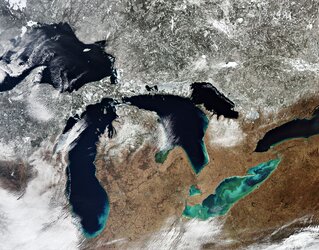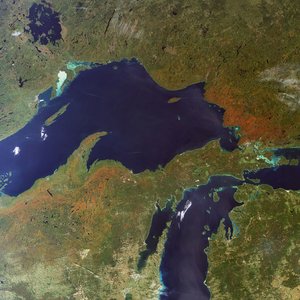Accept all cookies Accept only essential cookies See our Cookie Notice

About ESA
The European Space Agency (ESA) is Europe’s gateway to space. Its mission is to shape the development of Europe’s space capability and ensure that investment in space continues to deliver benefits to the citizens of Europe and the world.
Highlights
ESA - United space in Europe
This is ESA ESA facts Member States & Cooperating States Funding Director General Top management For Member State Delegations European vision European Space Policy ESA & EU Space Councils Responsibility & Sustainability Annual Report Calendar of meetings Corporate newsEstablishments & sites
ESA Headquarters ESA ESTEC ESA ESOC ESA ESRIN ESA EAC ESA ESAC Europe's Spaceport ESA ESEC ESA ECSAT Brussels Office Washington OfficeWorking with ESA
Business with ESA ESA Commercialisation Gateway Law at ESA Careers Cyber resilience at ESA IT at ESA Newsroom Partnerships Merchandising Licence Education Open Space Innovation Platform Integrity and Reporting Administrative Tribunal Health and SafetyMore about ESA
History ESA Historical Archives Exhibitions Publications Art & Culture ESA Merchandise Kids Diversity ESA Brand Centre ESA ChampionsLatest
Space in Member States
Find out more about space activities in our 23 Member States, and understand how ESA works together with their national agencies, institutions and organisations.
Science & Exploration
Exploring our Solar System and unlocking the secrets of the Universe
Go to topicAstronauts
Missions
Juice Euclid Webb Solar Orbiter BepiColombo Gaia ExoMars Cheops Exoplanet missions More missionsActivities
International Space Station Orion service module Gateway Concordia Caves & Pangaea BenefitsLatest
Space Safety
Protecting life and infrastructure on Earth and in orbit
Go to topicAsteroids
Asteroids and Planetary Defence Asteroid danger explained Flyeye telescope: asteroid detection Hera mission: asteroid deflection Near-Earth Object Coordination CentreSpace junk
About space debris Space debris by the numbers Space Environment Report In space refuelling, refurbishing and removingSafety from space
Clean Space ecodesign Zero Debris Technologies Space for Earth Supporting Sustainable DevelopmentApplications
Using space to benefit citizens and meet future challenges on Earth
Go to topicObserving the Earth
Observing the Earth Future EO Copernicus Meteorology Space for our climate Satellite missionsCommercialisation
ESA Commercialisation Gateway Open Space Innovation Platform Business Incubation ESA Space SolutionsLatest
Enabling & Support
Making space accessible and developing the technologies for the future
Go to topicBuilding missions
Space Engineering and Technology Test centre Laboratories Concurrent Design Facility Preparing for the future Shaping the Future Discovery and Preparation Advanced Concepts TeamSpace transportation
Space Transportation Ariane Vega Space Rider Future space transportation Boost! Europe's Spaceport Launches from Europe's Spaceport from 2012Latest

The Great Lakes of North America
Thank you for liking
You have already liked this page, you can only like it once!
This Envisat image highlights three of the five Great Lakes of North America. Lakes Huron (left) and Erie (bottom) are partially ice-covered following snow storms in Michigan and Cleveland, while Lake Ontario (right) is completely visible in blue.
The Great Lakes are said to be 'gifts of the glaciers' because of the way they were formed. About 100 000 years ago, the last major glacier called Laurentide (nearly 4 m thick) formed over most of Canada and part of the US.
As Laurentide formed, giant ice sheets flowed into the land carving out valleys and levelling mountains. Some 14 000 years ago warmer temperatures began to melt Laurentide. As it began to retreat, the resulting meltwater filled the huge holes left by the glaciers.
Covering a total area of 244 000 km² and containing about 23 000 km³ of water, together the Great Lakes form the largest connected area of fresh, surface water on Earth – roughly 18% of the world supply. The only place where more fresh water is contained is in the polar ice caps.
They have played an important role in North America's economic development by providing a transportation system between the agricultural and mining regions on the western shores with the market centres on the East Coast. The ability to ship materials such as coal, iron and ore also gave rise to the steel and automobile industries in the area.
The dark blue lines beneath Lake Ontario are some of the Finger Lakes in Upstate New York. These eleven lakes began as rivers running northward that were overrun by glaciers moving southward some 2 million years ago. Cayuga Lake (far right) is the longest, while Seneca Lake to its west is the deepest and largest in total area.
A part of the Appalachian Mountains is visible in the bottom left. The Appalachians stretch some 2400 km through eastern North America from the state of Alabama in the US to the province of Quebec in Canada.
This image was acquired by Envisat's Medium Resolution Imaging Spectrometer (MERIS) instrument on 22 February 2009, working in Full Resolution mode to provide a spatial resolution of 300 metres.
-
CREDIT
ESA -
LICENCE
CC BY-SA 3.0 IGO or ESA Standard Licence
(content can be used under either licence)

Great Lakes, North America

Lake Huron

Great Lakes

Fall foliage in the Great Lakes area















 Germany
Germany
 Austria
Austria
 Belgium
Belgium
 Denmark
Denmark
 Spain
Spain
 Estonia
Estonia
 Finland
Finland
 France
France
 Greece
Greece
 Hungary
Hungary
 Ireland
Ireland
 Italy
Italy
 Luxembourg
Luxembourg
 Norway
Norway
 The Netherlands
The Netherlands
 Poland
Poland
 Portugal
Portugal
 Czechia
Czechia
 Romania
Romania
 United Kingdom
United Kingdom
 Slovenia
Slovenia
 Sweden
Sweden
 Switzerland
Switzerland

























